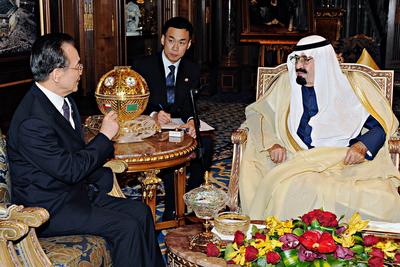With the economies of the US, the EU and Japan reeling from weak growth and burdensome debt levels, China is a key driver of global economic growth, contributing, along with other major emerging economies, nearly two-thirds of new global economic output. According to many projections, China will surpass the US as the largest economy in the world by 2030.
As its power emerges China will naturally become a more important player in shaping regional and global development and governance. Likewise, with its economy moving into a new phase through steady technological innovation and an explosion of domestic demand, China will play a bigger role as a major market and capital resource for regional and global economic growth.
China’s economy is highly integrated into the global market, so the country should participate actively in initiatives to reform the international economic system. While a stable and evolutionary reform process is important to China, the desired outcome should see structural changes that produce a new, more effective international system.
China is active in promoting efforts to improve regional governance through various forums involving the Asia Pacific region as a whole, East Asia, Central Asia and Northeast Asia. The goal is clear: to help create a favourable environment for economic cooperation, enhanced political trust and regional security.
It is significant that China’s strategy is focused broadly, encompassing more than just economic issues. An important part of these efforts are free trade agreements, whether bilateral or sub-regional, such as the FTA between China and the Association of Southeast Asian Nations (ASEAN). They are different from market-driven integration, because in addition to being compliant with the rules of the World Trade Organization, they provide a broader framework for cooperation among governments of different countries. Experience shows that FTAs can have a profound impact on improving governance in individual economies and regional systems.
In the past decade, China took the initiative to establish the China-ASEAN Free Trade Agreement (CAFTA) and played a leading role in the feasibility study for the East Asia Free Trade Agreement. China also actively sought to promote trilateral cooperation with Japan and South Korea. For China, CAFTA is more than just a trade agreement. It helps to provide a comprehensive framework for cooperation between China and the ASEAN countries. China is now the largest market for ASEAN exports, but relations go well beyond trade to include infrastructure, connectivity and capacity building for human development.
Although China participates in all regional arrangements, it views ASEAN +1 as its core regional relationship followed by ASEAN+3. China worries that the recent enlargement of the EAS from ASEAN+6 to include the US and Russia may weaken the cooperative spirit of East Asia because of different strategic interests.
Recently, the Trans-Pacific Partnership (TPP) led by the United States has received a lot of attention. Although China is the second-largest economy in this region, it is excluded from the TPP negotiations. China’s view is that the Asia Pacific Economic Cooperation (APEC) forum is the more appropriate for regional issues of the kind envisioned for the TPP.
While the United States is touting the TPP as a kind of high-level FTA for the 21st century, it will fundamentally change the nature of the APEC approach to regional relations. It can also be seen as a move by the United States to weaken East Asian integration and co-operation. This should worry ASEAN for two reasons. First, many member states aren’t included in the TPP. And second, it could have a negative impact on ASEAN’s central role in building an East Asian community.
In this context, a great concern is how China manages its relations with the US. That relationship today encompasses both economic prosperity and political security. By focusing on common goals such as global growth and prosperity, China and the US can establish and promote a partnership that will benefit both countries, as well as the rest of the world.
But promoting economic interdependence requires creating common interests and reducing incentives for conflict or instability. This is difficult in the current climate, where structural trade imbalances between China and the US are fuelling tensions. The US is pushing hard for China to allow the renminbi to appreciate quickly, while China is insisting on a gradual appreciation of the currency. With the US now part of the East Asia Summit, hopefully the two countries can use this framework to manage their interests and relations in a collaborative way.
The rise of China will end the current Western-dominated world order, but it will not end the Western world, as some alarmists in the West fear. In a highly interdependent world, human society’s future rests on true co-operation from all sides.
Zhang Yunling is Professor of International Economics, and Director of International Studies, Chinese Academy of Social Sciences.


Although the pace of globalization has made it easier for people to communicate internationally, direct communication may still be essential to promote cutting-edge knowledge and better understanding for scholars in world affairs. In my opinion, world affairs in the age of dynamic strategic landscape, thorough understanding of the complexity and multi-faceted of the game of world politics is important. What is needed is an awareness of global developments, an understanding of their meaning in its essence, and a development of the capability to adjust to change. Consequently, I think it would be beneficial for the U.S. and China if Chinese scholars specializing in international relations to have a sabbatical year opportunity to take a sabbatical year at any reputable United States university.
The idea that the P.R.C. is active in trying to “improve regional governance” would be amusing if it did not appear serious. While Mainland China remains a one-party, autocratic, militarist, colonial power it is certainly in no better position than any other regional government or global power to improve governance anywhere. The governance of Tibet, Xinjiang and Inner Mongolia are text book examples of how not to govern, but how to colonise and oppress.